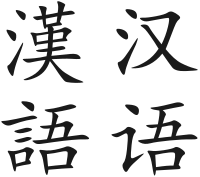There are multiple
considerations when choosing a tutor for your child. If you have a daughter,
you’ll not only want to take into consideration her personality, temperament,
demeanor, and overall strength in the subject or subjects requiring tutoring,
you will also want to consider the best candidate for the job. There are many
things to consider when comparing candidates. One of these many items is
whether or not to select a male or a female tutor.
If your daughter is
demure in nature, an overbearingly strong personality, whether male or female,
could cause her to not be as open and relaxed during the tutoring sessions to
readily receive the tutor’s instruction. Generally speaking though, knowing your
daughter’s personality is the biggest determining factor in who to hire for the
tutoring position. If you daughter adores her father and is a through and
through ‘daddy’s little girl’ then hiring a male tutor might work very well,
considering that the tutor is of course qualified in the subject or subjects
that you need them to provide instruction. A male tutor may naturally already
have your daughter’s inherent trust and the security that your daughter needs
to feel to be fully present in the tutoring sessions and not wrought with angst
over other potential problems. However, if your daughter compares all men to
her daddy and as such no man can ever be good enough, then this approach could
completely backfire.
If your daughter is a
strong-willed, young female who already holds the confidence and belief that
women can do whatever they put their mind to, then employing a female tutor may
help foster her growth and confidence while a male tutor might just
accidentally leave underlying signals through communication styles and body
language that ends up undermining your daughter’s confidence. A professional
tutor, whether male or female, wouldn’t purposely degrade a child’s
self-confidence, but sometimes their own personality can burst through so
strong that they don’t realize the subtle messages they benignly send.
An alternate
consideration is your daughter’s age and the age of the tutor, whether male or
female. A younger student would benefit well from a gentle approach to
tutoring, someone with a sweet nature who is tender and nurturing by default.
This would typically be a woman, but some men also possess these nurturing
characteristics. Generally speaking though, a female would be a better fit for
a very young student. As your daughter approaches upper primary school grades,
a male might be more engaging and interesting to your daughter since she has
likely been surrounded by female teachers in school this entire time. An
energetic male tutor might just bring your daughter’s interest in the subject
back and keep her engaged enough to begin to learn the more difficult concepts.
However, as your daughter approaches teen adolescence, it might be wise if
employing a male tutor to not consider one close to her age. Choosing a male
tutor that is in college for your teenage daughter may end up resulting in a
crush that significantly detracts from the education process itself as well as
introducing a whole new host of challenges and problems. In the teenage years,
exploring the option of an older male or female tutor would be a wise
consideration.
It’s not as crucial
whether you choose a male or female tutor for your daughter as much as it is
important to know your daughter and her needs well enough to find the right
tutor for the job. What does your daughter need most as an ally in her
education process? That is who you need to employ to tutor your daughter. It is
possible that as she progresses through her youth that you will find that the
same tutor is able to help her migrate the path through its entirety. However, you
may also decide to exchange tutors for a different style or method as your
daughter grows further into her own personality.



